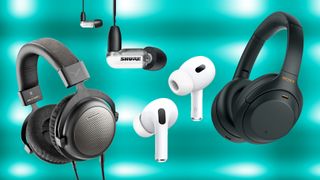Today's headphones market is nothing if not eclectic. You have the choice between enveloping over-ear headphones and uber-portable earbuds, as well as that between the cable-free convenience of wireless headphone or the higher-value performance of wired headphones. You have other important features, like active noise cancellation, to think about too. Indeed, finding the perfect pair is not as straightforward as it once was.
If you know what you want, you can visit our dedicated buying guides linked above. But if you aren't quite certain or are open to a few types, this is the page for you. Below you will find a how to choose the best headphones section to help you nail down your preferences, as well as the very best class-leading pairs across several types and budgets – there really is something for everyone here. This definitive list has been chosen by our expert in-house reviews team who have over 150 years of collective testing experience. Every year, we thoroughly test more than 100 models, each of which is compared against the class leader(s) so that we can gauge exactly where they sit within the competitive market. So without further ado...
The quick list
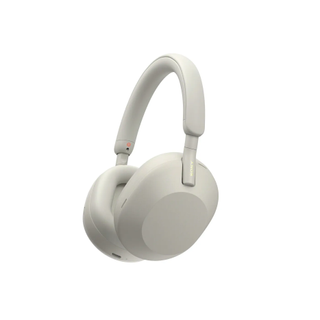
The Sony WH-1000XM5 are the best-value wireless noise-cancelling headphones out there, with a winning combination of comfortable design, useful feature set and entertaining performance that will truly satisfy most people.
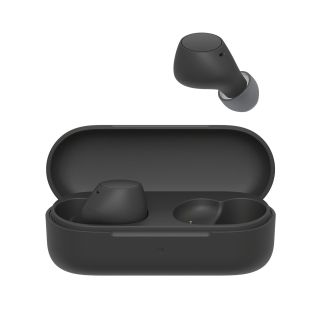
Truly brilliant value buds that manage to bring a lot of what makes Sony's premium wireless earbuds such a success without cutting too many corners too obviously. Compact design and great sound for modest money.
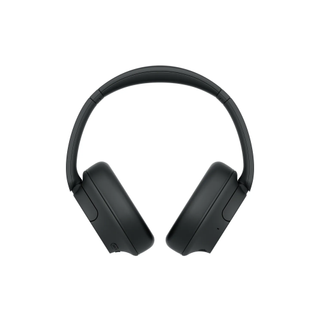
If you prefer an on-ear fit to an in-ear one, the Sony WH-CH720N are rare examples of how wireless headphones can be done on a budget. Good sound, durable design and effective noise cancellation.
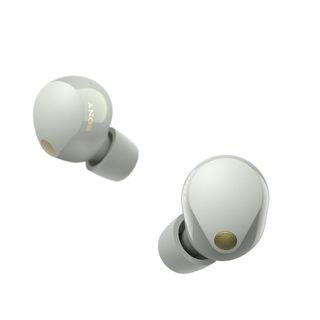
Sony’s most accomplished and analytical wireless earbuds yet, the XM5 represent the best all-round buds with ANC, with Sony packaging everything we like about its over-ears into a practical, portable in-ear form.
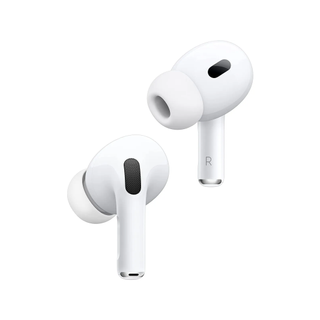
The latest, second-gen AirPods Pro are the best-sounding AirPods earbuds, with improved noise-cancelling over the originals and a wonderfully rich, engaging sound that’s now up there with the class leaders.
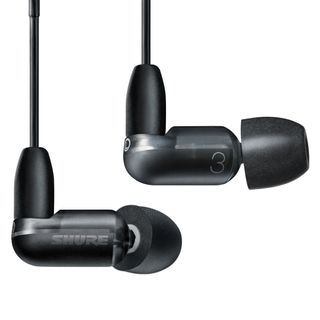
If you’re happy with the price tag and can resist the bells and whistles promised by wireless earbuds, you'd be crazy not to give the Shure Aonic 3 a chance. At this level, nothing comes close to their transparency and musicality.
Load the next 3 products ↓
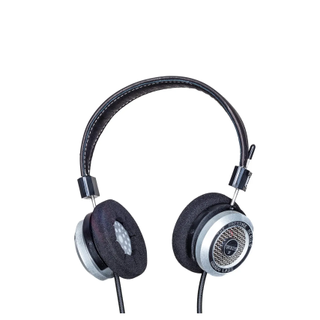
The latest model in a long and successful line of wired over-ear headphones, the SR325x are the ones to beat at this price point – and perfect for home use due to their open-backed (i.e. leaky) design.
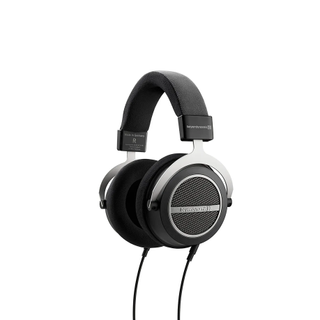
Open-back wired headphones that sound as good as they feel (and trust us, they feel wonderful). With sound of the highest quality, the Amiron will keep you happy no matter what they’re playing.
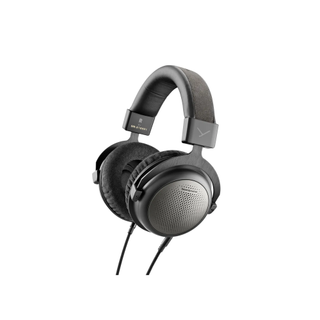
While there may be a strong sense of familiarity attached to this third-gen model, Beyerdynamic has managed to evolve the recipe to keep these over-ears at the cutting edge of performance at their price level.
Recent updates
November 2024: The budget Sony WF-C500 earbuds have been replaced by their successors, the WF-C510, which are fresh from their What Hi-Fi? Award 2024 win. Other newly crowned winners have been labelled as such, too, while we have added extra context to some entries in this light of a few new recommendable models having arrived on the scene, including the AirPods 4 with ANC and Bose QuietComfort Earbuds (2024).

I've been writing about headphones – not to mention other corners of the wide and wonderful consumer technology market – for over a decade and am one of What Hi-Fi?'s go-to reviewers for both wired and wireless models, having heard and lived with more pairs than I care to count. Thanks to my accumulated years of market knowledge, I consider myself an expert at picking the highest-performing and best-value options across the headphones spectrum. My picks below offer something for everyone, to satisfy every taste and budget.
The best headphones in 2024
Why you can trust What Hi-Fi?
Best overall
It can be tricky for a manufacturer to push the sound performance of a product consistently from generation to generation, but that is what Sony has managed to do with the WH-1000XM5 wireless headphones, our new Bluetooth noise-cancelling over-ear favourites.
When we saw the official pictures of the Sony WH-1000XM5 in 2022, we were more than a bit surprised. We wondered whether it was a wise move to give one of Sony’s biggest success stories in recent memory – the WH-1000XM4 that came before them – a major redesign. But it's paid off.
The Sony WH-1000XM5 headphones might feel a little less premium than the outgoing XM4, but the jump in sound quality from the previous generation is a big one. We particularly noticed an improvement in the lower frequencies this time round, and wrote in our review that they displayed "a newfound precision" that made even the superb XM4s sound a little thick in the bass. We also praised them for exposing "greater detail" than their predecessors across the frequency range, plus tip-top timing that sees notes "dispatched with unerring precision... they don't miss a beat".
Ultimately, if you are looking for a new pair of wireless noise-cancelling headphones and your budget can't stretch to the pricier, superior-sounding Apple AirPods Max, Focal Bathys or Mark Levinson No.5909, your auditioning should certainly start here. The previous WH-1000XM4 were already the best around – and are still very appealing, by the way, at their now-reduced price – but the XM5 are undoubtedly better for those who can afford them. Easy What Hi-Fi? Award winners.
Read the full Sony WH-1000XM5 review
Best budget earbuds
Building affordable true wireless in-ear headphones is a different discipline from building expensive ones, but it’s no less tricky. In the WF-C510, Sony has managed to bring a lot of what makes its established premium true wireless in-ears (such as the flagship WF-1000XM5 further down this list) such a success without cutting too many obvious corners.
The WF-C510 replace the former Award-winning WF-C500 and are What Hi-Fi? Award winners themselves, continuing the brand’s freakishly hot form in every corner of the wireless earbuds category. Indeed, it’s hard to pile on too much expectation at this modest price point, but Sony’s previous track record has us doing just that. And the WF-C510 don’t disappoint. They do feel and look a little cheaper than their predecessors, but they impress in every other aspect.
Firstly, they are small, lightweight and comfortable. This makes them a great option for smaller ears. During testing, our expert reviews team found that the Sonys slot into their ears "with zero fuss and are easy to position... there aren’t any extra elements to help keep them in place bar the silicone eartips, but they do a great job in this regard".
There are also more features than you might expect at this level, including Bluetooth Multipoint, IPX4 water resistance and, interestingly considering they don't have active noise cancellation, an Ambient Sound Control that allows some external noise in so that you can hear your surroundings. It works OK, albeit not if you're listening to music at decent volume levels.
Most importantly, the WF-C510 sound great for their price. "The key at this price point is to be fun, engaging and musical, and the Sony WF-C510 deliver all of this and more," reads our WF-C510 review. They are a touch fuller and richer-sounding than their predecessors, even.
Competition comparison
Again, they don't have active noise cancellation, which isn't surprising at this price, so if that feature is a must-have, we would point you to the slightly pricier, next-model-up Sony WF-C700N or, if you have a healthier budget, the new Bose QuietComfort Earbuds (2024).
Both alternatives five-star earbuds, but if you don't need ANC or are willing to sacrifice it for a bargain buy, then the Sony WF-C510 are your best bet. Want more options? Check out our list of the best cheap wireless earbuds.
Read the full Sony WF-C510 review
Best budget headphones
For a very reasonable price, the Sony WH-CH720N are a dependably made, enthusiastic-sounding pair of headphones that, while occasionally straying into the realm of excessive bass, deliver good noise cancelling (a rare thing at this price) and a strong feature set to the mid-to-low price bracket of the wireless headphone market.
These are designed as a pair of cans for those who aren’t keen on forking out a few hundred quid for a more premium pair of over-ears like the Sony WH-1000XM5 or Apple AirPods Max but equally don’t want to skimp on active noise cancellation or suffer a significant drop in audio fidelity by opting for the cheapest over-ears we can recommend, the entry-level WH-CH520. And they nail their brief.
The WH-CH720N are hardly a lavish affair and certainly don’t make the heart flutter with excitement every time you set eyes upon them, but they’re solid, substantially made and reasonably comfortable for their price. Throw in effective ANC that dampens noise pretty well and a sound that is lively, energetic and detailed (in our review, we noted that "we can’t think of any rival headphones at this price that could keep up with such a spirited delivery"), and you have a job well done.
Competition comparison
Truth be told, there isn't much recommendable competition for the WH-CH720N. We have tested other mid-range options, such as the Sennheiser Accentum Wireless, and haven't been impressed. That said, if you don't need active noise cancellation and can stretch your budget a little further, the Austrian Audio Hi-X25BT are fantastic alternatives that sound notably better than the WH-CH720N.
Read the full Sony WH-CH720N review

I noticed that these capable budget headphones sometimes sounded a little overwhelming, with a bass response that might be a touch too enthusiastic for some. If you feel the same, dive into the Sony Headphones app and adjust the bass EQ down a notch or two – you'll take away some of the warmth without losing any of their likeable assertiveness.
Best premium earbuds
With the WF-1000XM5, Sony has managed to build on the huge success of previous WF models (namely the XM3 and XM4) and produce another sensational pair of true wireless earbuds.
There's a new design that is a big positive: the XM5 are comfortable, nice to use and noise-cancelling and call quality are up there with the competition. And if you’re looking for the clearest and most detailed sonic performance at this price point right now, then the WF-1000XM5 produce it. They might not sound quite as fun as their predecessors – we note in our review that they're "not quite as rich or full in the bass" as we've come to expect from flagship earbuds from Sony, but the detail and clarity they're capable of is "really rather special".
Add to that a 24-hour battery life, Multipoint Bluetooth (so you can connect to two devices simultaneously), excellent noise cancellation (they seem to remove an extra layer of midrange noise compared to the previous XM4) and IPX4-rated sweat resistance, and this is a solid offering across the board.
Competition comparison
The premium wireless earbuds space is a popular one, with many pairs from brands just as big as Sony vying for your attention. The ones we believe are worth considering aside from our number one pick are 1) the Bose QuietComfort Ultra, which are more expensive but justify that extra outlay with a touch better sound quality and supreme ANC; 2) the all-new Bowers & Wilkins Pi8, which also sound better but have a higher asking price; and 3) the Sennheiser Momentum True Wireless 4, which thrive on sonic richness and a huge battery life. The AirPods Pro 2 (below) could win over iPhone fans with their iOS-friendly features and not-far-off sound quality, too.
Still, as the best all-rounders for most people, we're sticking with the WF-1000XM5. You can see a longer list of recommendations in our round-up of the best wireless earbuds.
Read the full Sony WF-1000XM5 review
Best AirPods
Not long ago, this accolade would've gone to the excellent-sounding AirPods Max over-ears, but the arrival of the second-gen Pro earbuds last year was even more pleasing, as it marked the first time AirPods earbuds received a What Hi-Fi? five-star review.
You see, the AirPods and AirPods Pro were always been one step behind the competition, particularly when it came to sound quality. They’ve been good-but-not-great wireless earbuds; lovely to use for iOS users, but never quite reaching the sonic heights established by the top noise-cancelling earbuds in this crowded and popular category.
That all changes with the latest Pro. The second generation of Apple’s flagship wireless ANC earbuds promises a more powerful processor, with advancements in active noise-cancelling, longer battery life, new features and, more importantly, better audio performance.
We certainly didn’t expect them to trouble the best-in-class competitors such as the Sony WF-1000XM5 higher up this list, but with the AirPods Pro 2, Apple is now on par where it once was still playing catch up.
"The AirPods Pro 2 sound confident," we say in our full Pro 2 review, "as if they’ve finally found their footing. They deliver a sound that’s very capable while also being very easy and fun to listen to. Regardless of what you’re listening to, the AirPods Pro 2 turn their hand skilfully to all genres of music."
Competition comparison
What if your budget doesn't quite stretch? The more affordable AirPods 4 with ANC are worth considering for Apple users for their iOS friendliness and spatial audio support, though the price-matching Bose QuietComfort Earbuds (2024) sound and block noise better. The cheaper version of the AirPods 4 without active noise cancellation are also worth considering.
Read the full AirPods Pro 2 review
Best wired earbuds
Shure has plenty of experience with wired in-ear headphones, and it shines through in the Aonic 3. They're comfy and lightweight for starters. The headphone cable hooks over the top of your ears and keeps them secure at all times – there is a slight knack required to get the swivelling buds in place, but it'll become a habit in no time.
Nine different eartip choices allow for excellent isolation, while an in-line remote and mic can control your tunes and answer calls.
Best of all, the Shures absolutely nail sound quality. "In the nicest possible way," we say in our Aonic 3 review, they "are the kind of headphones you can put on and just forget about. There isn’t a single element that sticks out – bass notes don’t protrude and highs don’t cut too deep. The Shures are honest, transparent and true to the original recording."
We love the level of detail they offer too, and their sense of rhythm and timing needs to be heard to be appreciated. We simply can't think of any pair of in-ear headphones at this price that even comes close, and that's why they're What Hi-Fi? Award winners.
Competition comparison
That said, they aren't exactly cheap and therefore may be out of reach for some buyers. If that's the case, the multi-award-winning SoundMagic E11 should be a first consideration. They offer the best-value performance below the Shure's asking price, despite being significantly more affordable, and have the bonus of an in-line remote.
At the other end of the scale, if your in-ear ambitions and budget surpass that of the Aonic 3, may we point you to the next-model-up Aonic 5 – the best in Shure's catalogue and indeed musical masters at their high-end level.
Read the full Shure Aonic 3 review
Best wired headphones
The Prestige range of headphones has been at the core of Grado’s output since it was first introduced three decades ago. While the series has developed over the years, Grado has always done so in small evolutionary steps. The story remains the same for this new ‘x’ generation.
These headphones have always been detailed and articulate performers, and that hasn’t changed, but the ‘x’ generation sound that bit more precise and insightful than the previous SR325e – cleaner and clearer too.
Our SR325x review notes that you can "follow low-level instrumental strands with more ease, especially in more densely produced tracks" while "the newfound sense of refinement makes it easier to relax when listening too."
It's important to note, however, that these are open-back headphones, meaning they leak sound both in and out and are therefore best for listening in quiet environments as opposed to on, for example, public transport. Many of the best wired headphones sport this design, which allows soundstages to feel more open and spacious.
Competition comparison
If preference or practicalities would see you hunting for a closed-back design (which doesn't leak sound), we would heartily recommend the closed-back Beyerdynamic DT 700 X Pro – also talented five-star performers that deliver a wonderfully rounded performance. The open-back versions, the DT 900X Pro, are also a great option if you really can't get over the Grado's somewhat dated design.
If your budget doesn't quite stretch to either of these, your best bet are the Award-winning, one-model-down Grado SR80x (open-backs) or five-star Austrian Audio Hi-X15 (closed-backs). Got more to spend? The Rode NTH-100 are also Award winners, and simply fantastic.
If you are looking for a quality pair of wired headphones around the Grado SR325x's price level, though, and are happy with an open-back design, put them at the top of your shopping list. Once you have a listen you’ll be glad you did.
Read the full Grado SR325x review
Best for home
When it comes to Beyerdynamic’s Amiron headphones, one word springs to mind: comfort. The earcups and headband are made of Alcantara microfibres (which have a texture similar to suede) and microvelour, a material as luxurious as it sounds. The result is a pair of headphones you can wear for hours and hours on end without discomfort or irritation.
They're not just comfortable, but they sound fabulous too. In our Amiron review, we particularly liked the Amiron's "clear midrange vocals, their tight timing, and the impressive way that they can handle challengingly messy songs" without breaking a sweat. That's why they are current What Hi-Fi? Award winners at the business end of the wired headphones category.
Like the Beyerdynamic headphones above, they are open-backed and leak sound like a sieve, so the usual disclaimer about not listening on public transport applies. And at this level, you should definitely use the Amirons with a suitable DAC / headphone amp (whether that be an external one or one integrated into an existing system component) in order to get the most out of them.
If you have a healthy budget and want a stunning pair of headphones, the Amiron will keep you happy no matter the genre. If your budget is even healthier and you're keen to get the most performance you can afford, the next pair of headphones on this list will be for you...
Read the full Beyerdynamic Amiron review
Best for audiophiles
If you have a greater budget that can extend past Beyerdynamic's Amiron to its flagship T1, you won't regret taking the plunge. The 10-year-old, original T1 open-back headphones are something of a touchstone for us as far as premium headphones go.
The main change between this third-generation model and its predecessor is that the new pair is easier to drive for laptops and mobile devices. The old model had a 600ohm impedance, while this new one takes that down to 32ohms.
The results are a sound that's very similar to the originals but cleaner and clearer if anything, slightly less bright and a little more rounded in the treble too, making them a bit more forgiving of aggressive electronics and recordings. There's that same delivery of music with a palpable sense of power and authority, and vocals come through with nuance and clarity, too.
They’re comfortable enough for long listening sessions thanks to a nicely shaped, partially Alcantara-covered headband and generous velour-trimmed earpads. These aren’t the kind of headphones that impress on a short listen. However, given a few days or even weeks, it’s hard not to fall under their spell. We certainly have.
Competition comparison
Once again, these are open-back headphones that leak sound in and out (and are all the better sounding for it), but very decent closed-back alternatives would be the brilliant Beyerdynamic T5 (3rd Gen). And if your budget is bigger still, we recommend you head on over to our best audiophile headphones buying guide, which feature the likes of the Sennheiser HD 820, Focal Utopia (2022) and Yamaha YH-5000SE at the top of the A-list pile.
Read the full Beyerdynamic T1 (3rd Generation) review
Also consider
- Bose QuietComfort Ultra Headphones: If active noise cancellation is your top priority, your decision to opt for Bose's brilliant new wireless over-ears over the Sony WH-1000XM5 (in this list) or Apple AirPods Max would be more than justified. They not only boast class-leading ANC but also look and sound the part too, with spatial audio technology being a bonus.
- Beyerdynamic DT 700 Pro X: If you want good-quality wired over-ears but don't like the rather divisive look of the Grado SR325x, these brilliant Beyerdynamics are another similarly priced, open-back (i.e. leaky) model well worth your cash. Their closed-back (non-leaky) DT 900 Pro X siblings are fantastic too.
- Sony WF-C700N: The next-step-up model from the Sony WF-C510 on this list – but with active noise cancellation (and enhanced sound quality). If ANC is important and you can't afford Sony's flagship WF-1000XM5 (also in this list), these mid-range wireless earbuds are your best bet.
- Bowers & Wilkins Pi8: The Pi8 are the best wireless earbuds we’ve heard from the brand and real contenders for class-leading status at this ultra-competitive premium end of the market, hence their current What Hi-Fi? Award. If you can spend more than the Sony XM5 earbuds require, we'd be very tempted to splurge here.
How to choose the best headphones
If you want a pair for home use, to plug into your hi-fi system or music player, a wired pair of over-ear headphones is best. You'll then have to choose whether you want an open-back design (which leaks sound but offers sonic advantages) or the more traditional and common closed-back form (which isn't leaky). You can read all about the closed-back vs open-back headphones differences here.
If you have chosen a wired pair for your phone or laptop because you prioritise sound quality, just be aware that once you go beyond the budget level, we would recommend adding an external DAC as the middleman to boost your inevitably poor-sounding device. That way, you can truly make the most of your headphones purchase.
You might understandably want something more portable and convenience-first to use on the go or for exercise, and if that's the case, you'll have to decide whether you want the uber-portability of wireless earbuds or the more immersive over-ear wireless headphones – and both styles can vary wildly in terms of budget and features.
You should know that while wireless models are great for their cable-free convenience, their Bluetooth technology generally attracts a higher price tag compared to wired counterparts of similar sonic quality.
Then there are noise-cancelling headphones for silencing the noise of everyday life. Noise-cancelling functionality, which helps isolate you from the world by actively blocking ambient noise, is becoming a more common inclusion on all but the very budget wireless pairs, though wired noise-cancelling headphones are a rare breed nowadays.
If you're still unsure which way to go, take a look at our more comprehensive guide on how to choose the right pair of headphones. You might then want to delve into one of our specific buying guides, linked below.
- Best wireless headphones
- Best noise-cancelling headphones and noise-cancelling earbuds
- Best audiophile headphones
- Best sport, running and workout headphones
- Best cheap headphones
How we test headphones
We have state-of-the-art testing facilities, where our team of experienced, in-house reviewers test the majority of hi-fi and AV kit that pass through our doors.
Of course, testing headphones doesn't often require such facilities (though we do often try high-end audiophile headphones in our reference hi-fi system). What is important in our headphones reviewing process is that each pair is compared to the best in its price and style class – whether that's one standout pair or a few we favour the highest among the 100+ pairs we listen to each year for reviews and What Hi-Fi? Awards judging. We keep class-leading products in our stockrooms so we can always compare new products to ones we know and love.
We live with each pair for weeks during testing so we can see how they fare as all-round daily companions, clocking their battery life endurance, putting their build quality through the wringer, noting their comfort over long wears and – most importantly – comparing their sound quality with other headphones of their type and price point. If they have active noise cancellation, spatial audio or another smart feature increasingly seen in wireless headphones nowadays, we go twelve rounds with them too!
We are always impartial and do our best to make sure we hear every pairs at its very best, so we'll try plenty of different types of music and give them plenty of listening time (and time to run in), while the wired headphones that might warrant being used with a DAC are tested with a suitable one.
In line with how we test all products at What Hi-Fi?, all review verdicts are agreed upon by multiple members of the review team rather than an individual reviewer to eliminate any personal preference and to make sure we're being as thorough as possible. There's no input from PR companies or our sales team when it comes to the verdict either, with What Hi-Fi? proud of having delivered honest, unbiased reviews for decades.
Read more about how we test and review headphones at What Hi-Fi?
Recent updates
- August 2024: Our definitive list hasn't changed, but the premium wireless earbuds field has a fierce contender in the excellent Bowers & Wilkins Pi8, which make our Also Consider list. The Dyson OnTrac over-ears arrived with much fanfare, too, but ultimately disappointed our reviews team.
- July 2024: We've tested a handful of headphones since our last update in May, but none have impressed enough to feature on this list: the wired Sennheiser HD 620S impressed, but pairs from Google, Sivga and Sonos didn't quite cut it.
- May 2024: No new entries this time, despite having tested 15 pairs since our last update to this page. The Sennheiser Momentum 4 Wireless earbuds came very close, but we still fancy the Sony WF-1000XM5 in this list more. And the new Sonos Ace? Disappointing, unfortunately.
- February 2024: We added more detail to our best buy picks to improve context, adding alternative options and quotes from our reviews to help you better with your buying decisions.
- October 2023: We added information to flag our new What Hi-Fi? 2023 Award winners.
Headphones FAQ
Are wired or wireless headphones better?
If you are looking to get the absolute best sound quality you can for your budget, wired headphones still have a considerable edge over wireless headphones when it comes to performance. Wired headphones are also more sustainable, of course, as they don't require batteries.
That said, wireless headphone performance is getting better every year and there are certain traditional features (such as active noise cancellation) that are increasingly only found in Bluetooth models, not to mention the fact that modern features such as spatial audio (for 3D immersive sound) and transparency mode (for amplifying external sound) are exclusive to wireless types. Their cable-free design is more convenient too.
Really, the choice of wired vs wireless headphones comes down to your priorities. If it's sound, go wired; if it's convenience or next-gen headphones features, go wireless.
Should you choose headphones or earbuds?
Generally speaking, 'headphones' refer to on-ear and over-ear designs whose earpads nestle on or around your ears, while 'earbuds' cover in-ear models whose eartips bury into your ear canal. Which type you choose will depend on what you want to use them for, what performance ambitions you're aspiring to, and largely simply which design you prefer.
Earbuds are better for exercise as they're discreet and fit more securely than a bulkier on/over-ear design. As they shoot music straight into your ear canal, they tend to sound more direct too. They're smaller, of course, and so easier to carry around with you, and there's a much wider choice at the budget end of the market below, say, £50/$50/AU$80 where on/over-ear designs are harder to come by.
However, on/over-ear designs are the ones to go for if you want the best sound you can buy, as earbuds (especially wireless models) don't reach the same performance peaks at the highest end of their market. They tend to be less tiring to listen to over longer wears due to the space between your inner ear and the headphone driver, too, as well as comfier to wear for long periods without your ears getting sore. If noise-cancelling is important to you, an on/over model with ANC generally tends to be more effective than an in-ear pair with the functionality.
How much should you spend on headphones?
Headphones and earbuds vary wildly in price, from less than £20/$30/AU$50 to over 100x that. The answer on how much you should spend really depends on whether you go for a wired or wireless model, how serious you are about sound quality, and ultimately what you can spend or feel comfortable spending.
Typically nowadays, wireless headphones tend to be pretty universal on the features front, with active noise cancellation (ANC) and 20-hour+ battery lives spanning budget and premium price points. So what you're paying for is differences in sound quality and, in the case of Apple headphones for example, proprietary technologies that aim to enhance headphone listening and use beyond the necessaries (think Apple's spatial audio and audio sharing, say.) You can pick up a pair of decent-sounding wireless headphones or earbuds from about £100/$100/AU$200 or £60/$80/AU$120 respectively – we haven't come across many highly recommendable pairs below those figures – but the premium space comprising models costing around two or three times that is where you'll find not necessarily better-featured pairs but significantly better-sounding ones.
As for wired headphones, even (good) budget pairs can contend with the sound quality of mid-to-premium wireless headphones. If you're spending north of around £200/$200/AU$350 on a pair, we'd highly recommend partnering them with some sort of external DAC if your source is something like a phone or laptop to ensure you're getting the most out of them.
MORE:
More into buds? Our best wireless earbuds will sort you out
Our pick of the best headphone deals will help you snag a bargain
Yamaha engineers discuss the rewarding YH-5000SE journey – and future headphones
My success story of the year was also the biggest surprise
